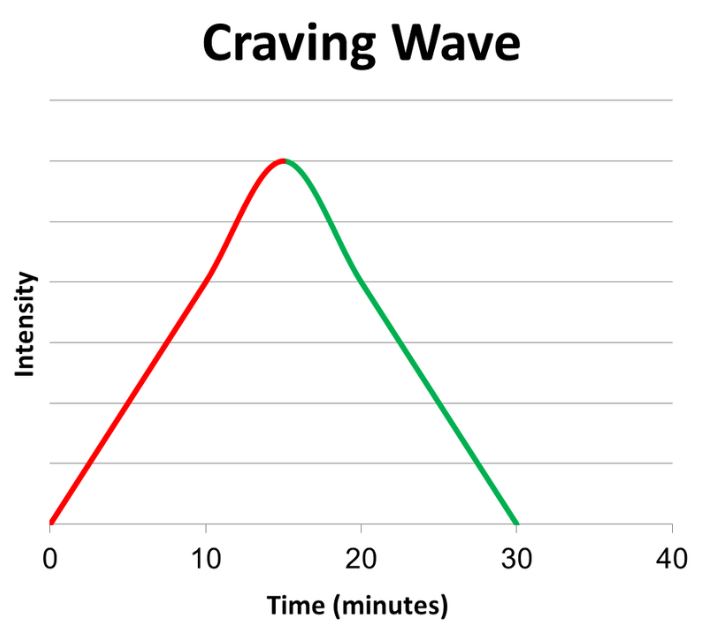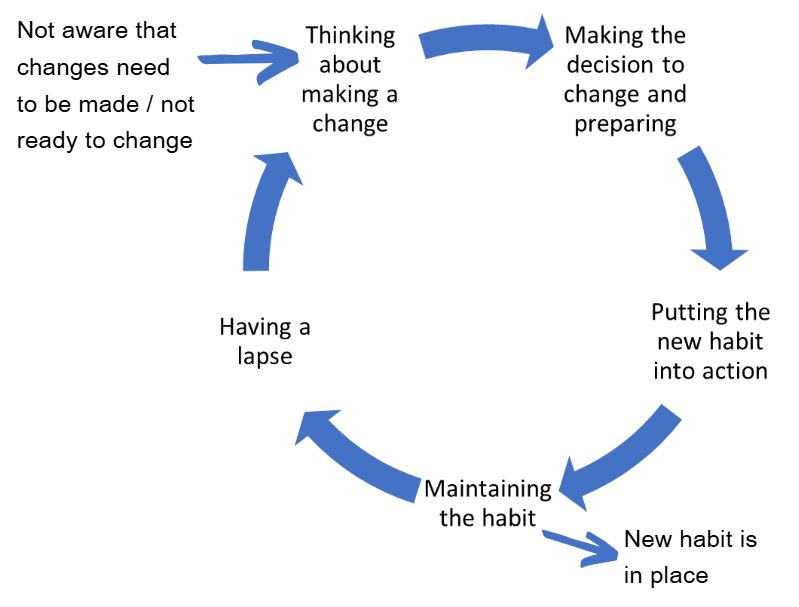Hopefully you now feel equipped with the information and tools to start and maintain healthier lifestyle changes.
When making changes in our life, it is normal to experience challenges around making progress, dips in motivation and occasional returns to old behaviours. This does not mean all your hard work and changes prior to this have been in vain.
What is important is getting back on track as soon as we can. It might help you to deal with the issue when it arises, if you know what come of the challenges might look like.
Social pressure
A large part of socialising involves food and drinks. Having treats at these times is normal.
We can sometimes feel pressured from friends, family or colleagues to eat or drink when we do not want to. This can feel frustrating and can hinder our efforts around positive lifestyle changes.
Reasons others might encourage us to eat/drink:
- They may feel awkward eating on their own
- Feeding others is their way of showing they care
- They feel bad about their own diet and struggle seeing others taking control of their eating habits
- They do not realise you are serious about changing your eating habits
Whatever the reason, you do not have to eat or drink to make someone else feel more comfortable.
Can you imagine a social scenario in your own life where you might feel pressured into eating? How might you ideally react?
One possible response could be to just repeatedly say “No thank you, I don’t feel like eating/drinking right now”.
Cravings
Cravings can make it hard for us to keep a healthy diet. A craving is not a physical need for food. It is a psychological desire. A craving may not be satisfied by eating.
It is easy to mistake a craving for actual hunger. There are some signs that help differentiate cravings from hunger.
If you are physically hungry you may feel:
- light headed
- shaky
- like there’s a knot or gnawing in your stomach
Over time physical hunger will not go away, instead the feeling will grow.
On the other hand, common signs of a craving include:
- Longing for specific foods, not food in general
- Feeling hungry despite having recently eaten
- Longing for food at certain places, behaviours or times (like always having popcorn at the cinema)

Things that might help to avoid eating in response to a craving include:
- Confront the urge – mindfully acknowledge the craving, then redirect your attention consciously
- Drink a glass of water – ensure you stay hydrated. Sometimes hunger or a craving can be thirst
- Delaying – as the Craving Wave diagram shows, cravings tend to pass. If you wait 30 minutes the feeling will hopefully pass
- Distraction – any activity that engages your mind, and is incompatible with eating, works best. This might be speaking to someone on the phone, going for a walk or having a shower
- Listen to your self-talk – if you’re saying things to yourself like “I need to have it”, “I’m desperate”, or “I could kill for a piece”, try to purposefully use less emotive language
- Eat regularly – remember to eat regularly and allow treats in moderation
Lapses and relapses
Lapses and relapses are different:
- A lapse is just a slip or a one off (for example a day where you graze entirely on snacks, but get back into the pattern of eating regularly the next day)
- A relapse is when a lapse continues until you fully return to old habits (for example a day where you graze entirely on snacks, decide to eat nothing the next day and find yourself stuck in a pattern of eating irregularly after this)
Slips are a normal part of making positive lifestyle changes. When they happen, we can feel out of control and lose confidence in our ability to continue with the positive changes we have made so far. This can sometimes lead to relapses.
The Stages of Change model shows where we might be at any point in terms of our motivation to make or keeping going with lifestyle changes.

We can go through many cycles before a new behaviour or habit sticks.
Triggers or barriers might bring about a lapse. We might stay in that stage for a day or two, before we push ourselves back through to the ‘thinking about making a change’ stage and put new habits into action.
How we respond to lapses is key to getting back on track. Talking to ourselves in a kind, supportive and encouraging way will help. Focussing on the positive changes we have made and the reasons why we want to adopt a healthier lifestyle will help us get back on track. Learning from what has happened will help us keep changes going next time.
One slip up does not mean you have failed!
Getting support
People around us can be a great source of support:
- What help do you need going forward?
- How can your family and friends help?
- Explain to others how they can help.